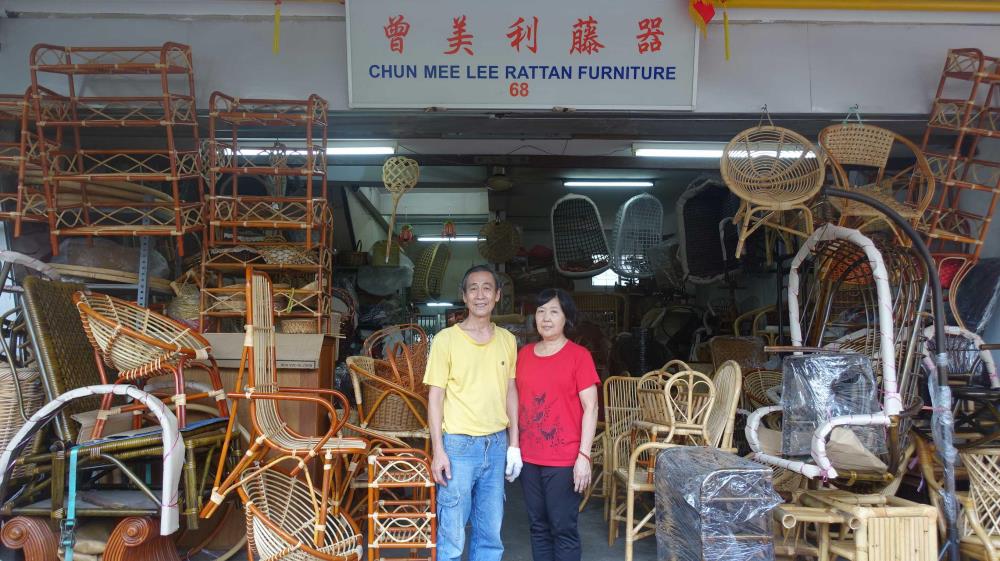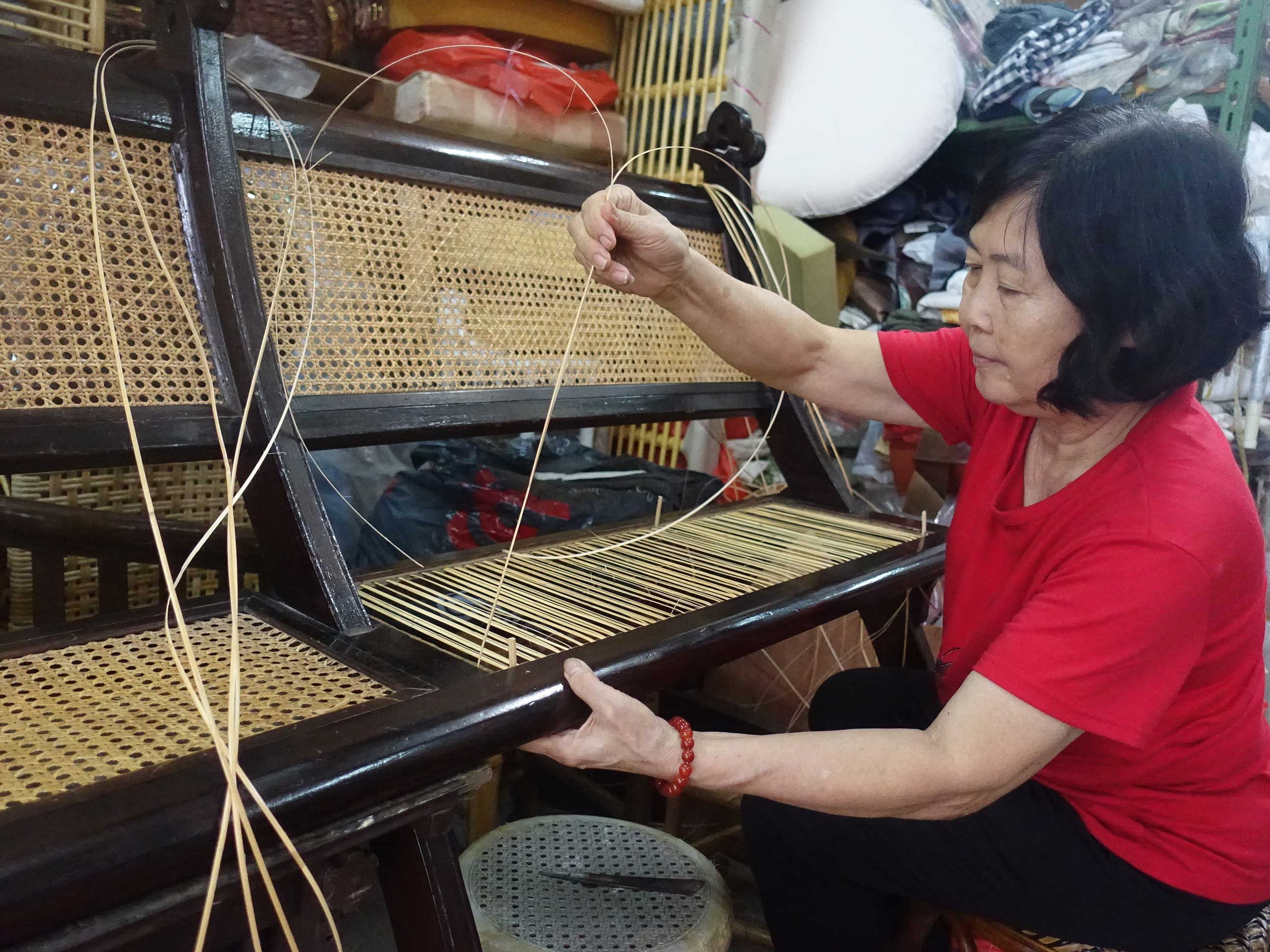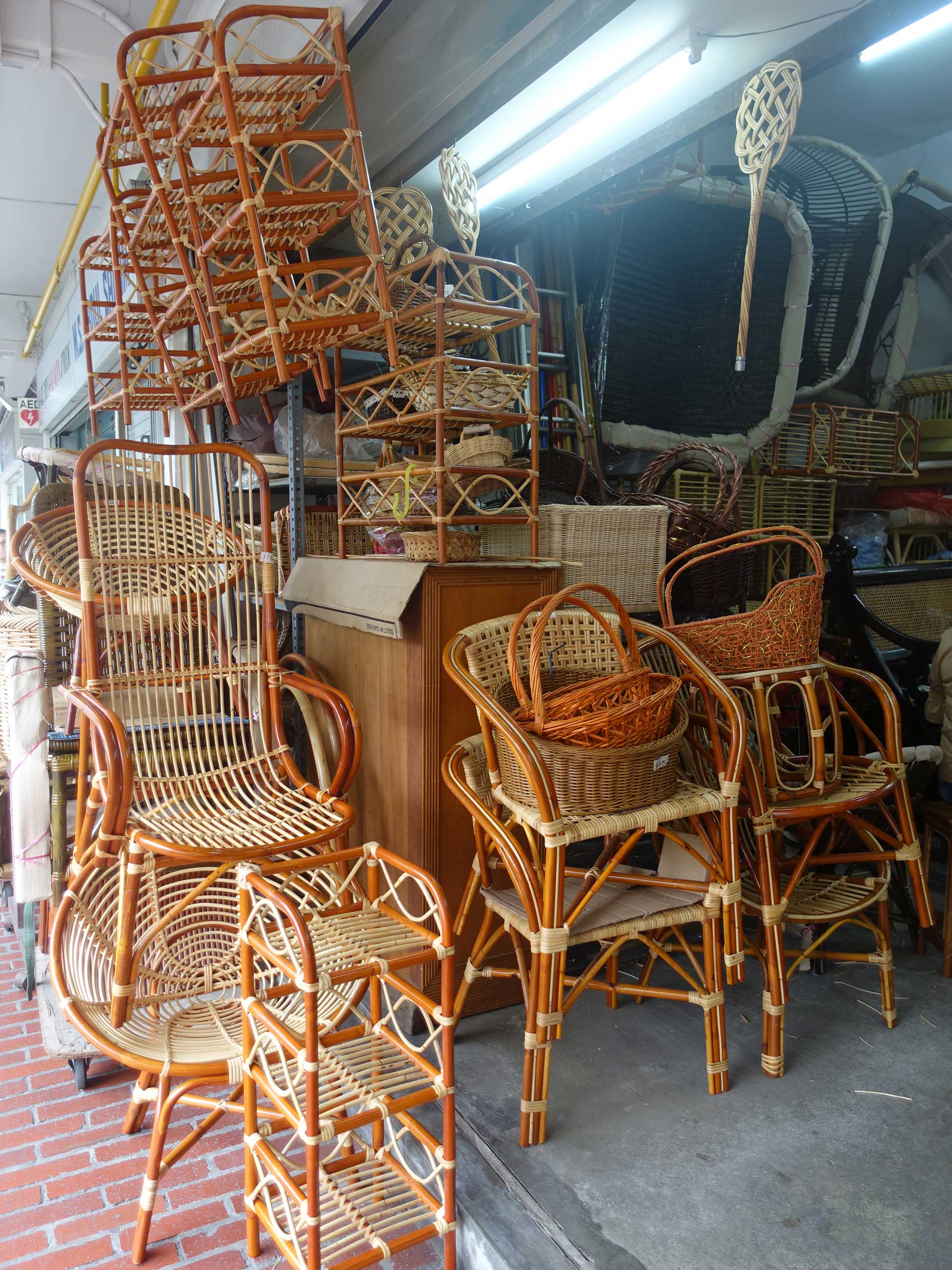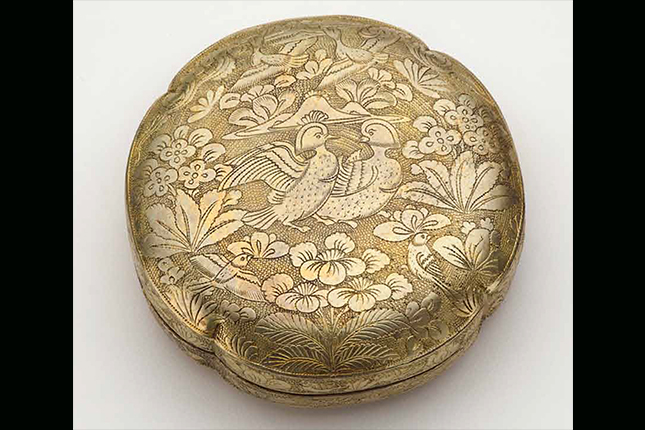Making of Rattan Products
Rattan is a family of climbing palms found in tropical regions, and is used for a variety purposes, including the making of furniture and handicrafts, and as building materials. The name “rattan” refers to the stem of the climbing palm, and is believed to have originated from the Malay word “rotan”, meaning “to pare”. Rattan is also sometimes known as “cane”.
In Singapore, the making of rattan products is closely tied with its economic history. Historically known as a centre for entrepot trade of rattan, the rattan industry in Singapore reached its peak in the 1960s and 1970s, when there was a rapid growth in the processing of rattan raw materials and making of rattan products, as driven by global trade and domestic development. Known for high-quality hand-made rattan products and technology in rattan processing, Singapore was also a centre for regional rattan research in the 1980s. Though the industry dwindled from the 1990s due to the global competition and economic and social factors, Singapore remains a key player in the global trade in rattan raw materials.
Today, there are a number of traditional rattan makers in Singapore who continues to hand-make rattan products, as a craft which has been practised in Singapore since its early days to present.
Geographical Location
Rattan can be found in the tropical regions of Africa, Asia and Australasia. In Southeast Asia, rattan-producing countries include Indonesia, Malaysia, as well as Laos, Cambodia and Vietnam.
In places such as Indonesia and Malaysia, indigenous communities have been practising rattan craftwork through generations, as a tradition closely linked to the available resources present in the natural environment.
Rattan craft practices vary across the region. For example, rattan-makers in countries such as Indonesia, Philippines and Thailand favour making rattan chairs using thin rattan canes by weaving, while rattan makers in Singapore usually work with thick frames made from thick rattan canes, such as rattan manau.
In Singapore, rattan traders and makers used to be concentrated at Singapore’s city centre, such as Boat Quay, Hock Lam Street, Carpenter Street, Victoria Street and Telok Ayer. Over time with urban redevelopment, rattan factories and shops moved out to fringe areas such as Kampong Bugis, Balestier, Kallang Bahru, Alexandra, Joo Chiat and later to industrial areas including Sungei Kadut, Ang Mo Kio, Hougang and Tampines.
Communities Involved
In Singapore, various communities including traders and makers from the Indian, Malay and Chinese communities have been involved in rattan craft. Within the Chinese community, rattan practitioners are said to be differentiated by dialect groups- where rattan furniture makers were often Hakka; exporters of cane and rattan basketry makers were Teochew; while manufacturers for rattan processing works were mostly Cantonese dealers.
In the past, there were rattan associations such as the Singapore Rattan Industry Association and the Singapore Rattan Merchant’s Association. However, these associations have since disbanded and there are currently no organised associations that represent the interests of rattan merchants or workers.
Today, there are still a number of Chinese rattan-makers and manufacturers continuing the practice.
Associated Social and Cultural Practices
Other than being used for craftwork and building material, rattan also has medicinal purposes particularly through its resin and gum, while its inner core and shoot can be used for food.
In Singapore, rattan practitioners view the making of rattan crafts as representative of a certain economic and cultural period, as there was a need at the point in time where people chose to learn and master these hand-crafted traditions and make a livelihood out of these skills. With the changes in socio-economic environment, the rattan craft and trade has evolved with times.
Though there had been technological advances in the rattan industry, the majority of the work behind making of a rattan furniture still requires hand labour. For example, tasks such as heating of rattan to soften and weld it into different shapes for chair frames can be done by machines. However, the assembly of the parts, such as weaving and painting of the finished rattan furniture, are still required to be done by hand.
Rattan makers would conceptualise designs based on clients’ requests and needs, such as estimating a chair’s dimensions and depths according to the size of the human body. It is also important for the chair frame, which is often made with thick rattan canes such as rattan manua (large-diameter rattan with qualities of strength and smooth surface), to be structurally strong, so as to set the shape for the weaving work. Thin rattan, also known as rattan wicker or rattan peel, such as rattan sarawak or rattan lunti, which are typically about 10mm in thickness, would be woven to make the seat and backing of the chair.
The weaving is often a test of the skill of the rattan maker, and the end process involves staining or colouring to complete the look for the rattan chair.
Mr Chen Foon Kee, owner of Chun Mee Lee Rattan Furniture (曾美利藤器) in Singapore, shares that in the Hakka tradition, rattan makers would learn the craft by following a master skilled in rattan making for one year. The apprentice learns basic skills from the master, and finds work while continuing to pick up the skills. Sometimes, the master craftsman might gift his apprentice a set of tools at the end of the one year, to aid the apprentice in furthering the skills and livelihood.
Women also play an important role in the community, as typically those who marry rattan makers also learn and master the skills, as did Mr Chen’s mother and wife.Experience of a Practitioner
Mr Chen Foon Kee learned the craft of making rattan chairs from both his father and mother, since the age of 11 years old. His family is of the Hakka dialect, hailing from Xing Ning county, Mei Zhou prefecture, in the Guangdong province, an area known for artisan craft involving bamboo products.
His father has been involved in the rattan trade since 1930s, and the family shop has moved through multiple locations including Tanjong Pagar, Victoria Street and Anson Road.
Mr Chen took over the family business, Chun Mee Lee Rattan Furniture, in the 1960s, and has been making and repairing rattan chairs and rattan products till the present. In 1979, he relocated his shop from Anson Road to the current premises at Alexandra Brickworks Estate.
Mr Chen specialises in making rattan chairs, but can make other items such as mosquito net frames, baskets, beds, lamps, based on the clients’ requests and designs. Mr Chen’s wife, Mdm Lee Joon, also learned the techniques of rattan making after marriage, and has been working with Mr Chen in repairing and making rattan products.
Mr Chen’s perspective is that the skill of rattan making is passed on as oral tradition, based on experience accumulated over generations, which is necessary to the craftsmanship of making the rattan products. He personally views rattan with a sense of artistic appreciation, and shares that translating the drawings brought by customers into hand-crafted rattan products brings his customers pleasure and a sense of satisfaction to himself. It hence fulfils both functional use and aesthetic appreciation.
He shared that the making of rattan products might well be one of the very few artisanal traditions that appeared in Singapore in the 19th century, and is still practised in modern Singapore.
Present Status
Mr Chen has observed that the rattan making industry has declined since the 1990s, due to change in consumer’s tastes over time, and a variety of socio-economic factors.
Though there are challenges in greater competition from imported rattan goods and difficulty in finding successors to pass on the trade, there still remains interest in rattan as a sustainable material, the cultural heritage significance of making rattan, and the incorporation of rattan into contemporary designs and techniques. Rattan weaving has also been increasingly incorporated into modern designer furniture making and energy saving building solutions.
The general public is interested in rattan products, as these constitute shared memories for many generations of Singaporeans, and there is reviving interest in rattan furniture for home decorations and furniture.
Mr Chen hopes that the interest in rattan will return and sustain, and that he can live to see the rattan industry enjoy a comeback.
References
Reference No.: ICH-083
Date of Inclusion: October 2019
References
Abdul Razak Mohd Ali and Raja Barizan R.S. “Country Report on the Status of Rattan Resources and Uses in Malaysia”. In Rattan: Current Research Issues and Prospects for Conservation and Sustainable Development. Food & Agriculture Organisation of the United Nations (FAO), 2000.
Dransfield, J. A Manual of the Rattans of the Malay Peninsula. Kuala Lumpur, Forest Dept., Ministry of Primary Industries. 1979.
Dransfield, J. “General Introduction to Rattan – the Biological Background to Exploitation and the History of Rattan Research”. In Rattan: Current Research Issues and Prospects for Conservation and Sustainable Development. Food & Agriculture Organisation of the United Nations (FAO), 2000. http://www.fao.org/3/y2783e/y2783e00.html. Accessed on 23 July 2019.
Furtado, C.X. “Singapore’s Contribution to the Study of Palms” Gardens Bulletins XVII: 194 – 197, 1958, https://lkcnhm.nus.edu.sg/dna/docs/327e92053f981063e8c027a49361f428.pdf. Accessed on 23 July 2019.
Hirschberger, P. “Global Rattan Trade: Pressure on Forest Resources, Analysis & Challenges”. World Wildlife Fund (WWF), February 2011, http://www.unece.lsu.edu/responsible_trade/documents/2013Mar/rt13_04.pdf. Accessed on 23 July 2019.
International Bamboo and Rattan Organisation (INBAR). An Overview 2016: Bamboo and Rattan Products in the International Market, 2016, https://resource.inbar.int/download/showdownload.php?lang=cn&id=167949. Accessed on 23 July 2019.
International Development Research Centre (Canada). Rattan: a report of a workshop held in Singapore, 4 – 6 June 1979. Ottawa: International Development Research Centre, 1980.
International Development Research Centre (Canada). The IDRC Bamboo and Rattan - Research Network in Asia. IDRC Bamboo/Rattan Research Network G. Dhanarajan, A.N. Rao, C.B. Sastry, 1989.
Razali Wan Mohd., Wan et al. A Guide to the cultivation of rattan. Kuala Lumpur, Malaysia: Forest Research Institute Malaysia, 1992.
Sastry, C.B. “Rattan in the Twenty-First Century: An Outlook”. In Rattan: Current Research Issues and Prospects for Conservation and Sustainable Development. Food & Agriculture Organisation of the United Nations (FAO), 2000.
Siebert, S.F. Nature and Culture of Rattan: Reflections on Vanishing Life in the Forests of Southeast Asia, 2012.
Singapore Rattan Industry Association. The 70th Anniversary Souvenir Magazine of the Singapore Rattan Industry Association, 1980.
Singapore Rattan Industry Association. 1995. The 85th Anniversary Souvenir Magazine of the Singapore Rattan Industry Association (1909-1994), 1995.



















